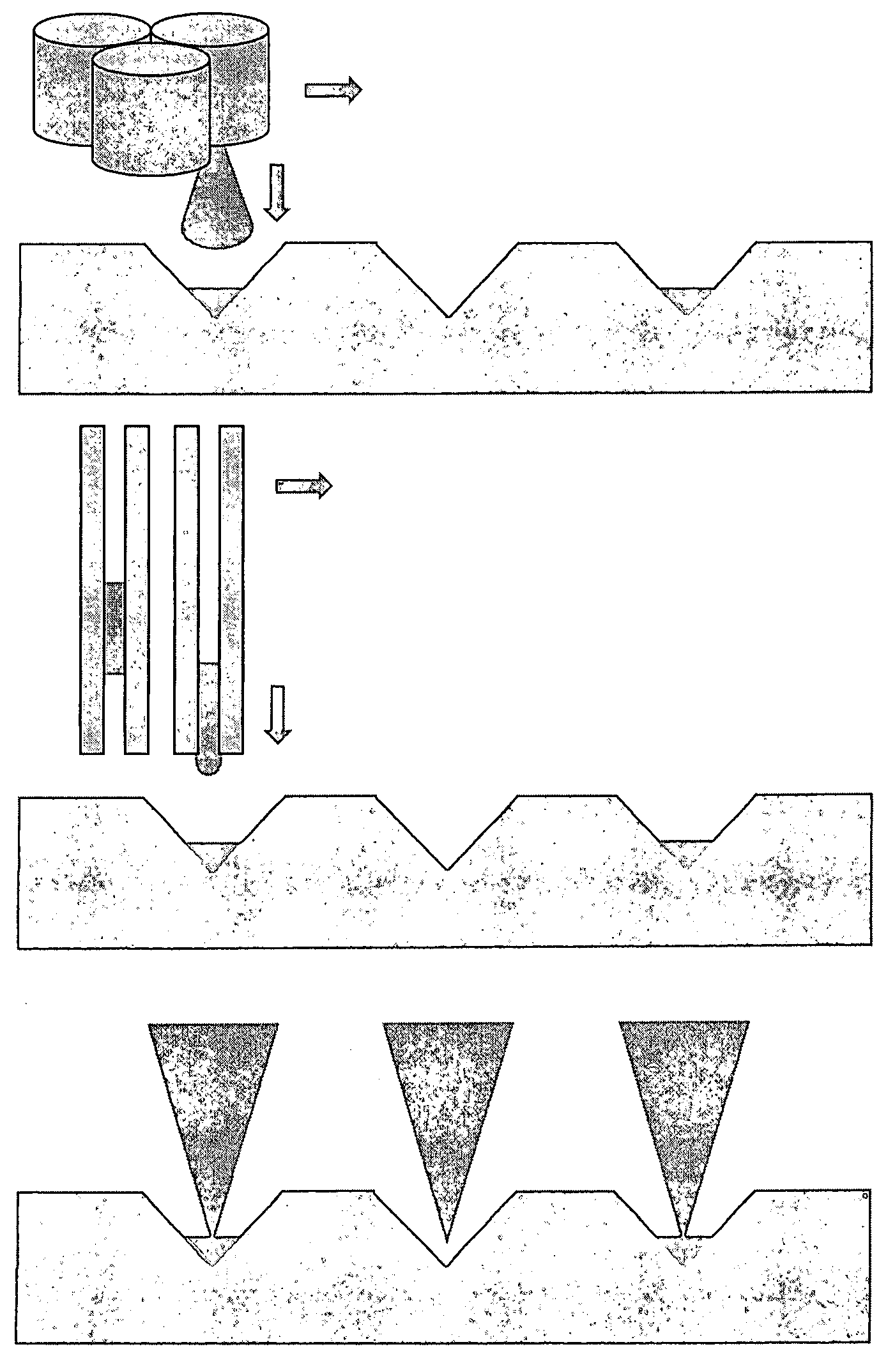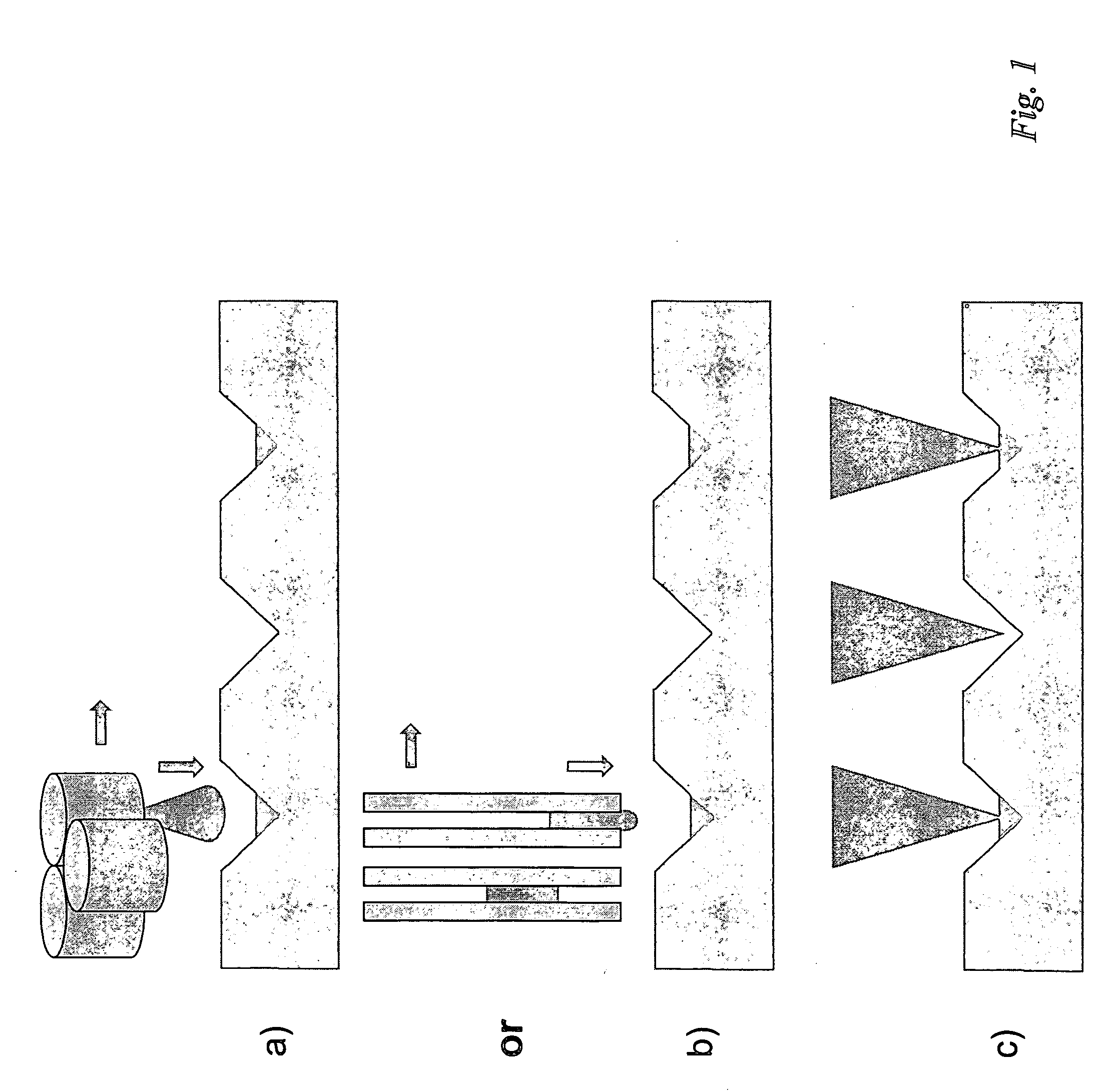Methods and apparatus for ink delivery to nanolithographic probe systems
- Summary
- Abstract
- Description
- Claims
- Application Information
AI Technical Summary
Benefits of technology
Problems solved by technology
Method used
Image
Examples
first embodiment
In a first embodiment, a rolling cylinder or sphere may be brought in close proximity with the probe array to ink, and (groups of) probe(s) may be contacted with the cylinder. The cylinder may be inked by microfludics circuits connected with ink reservoirs or may be patterned e.g., by rolling the cylinder on an inked microcontact printing stamp.
second embodiment
A second embodiment may be comprised of a device similar to a dot matrix printer head or a pin-and-ring microspotter. Spring-loaded pins terminated by a cusp or a spongy tip (acting as an ink reservoir) may be electromechanically actuated. The pin assembly may be brought in close contact with the probe assembly, so that ink may be delivered by mechanical contact between the pin head and a probe.
In the pin-and-ring design, a ring is dipped in an initial ink reservoir (e.g., microtiter plates) and stores some of the fluid to be delivered by capillary action. The pin is then coated with ink by plunging it through a fluid disc.
third embodiment
A third embodiment may use another inked probe, a probe array, or a series of probe arrays to ink the probe or probe array to be used in the nanolithographic apparatus.
Non-Contact (Inkjet) Delivery
In this embodiment of the invention, the probe or probe assembly to be inked may be brought in proximity of a dispensing system that releases a controlled amount of fluid in the form, for example, of an ink droplet, bubble or (exceptionally) of a powdered aggregate. The ink droplet(s) may be directed towards the tip or an associated structure, from which the ink may be transported to the tip.
The dispensing system may include one or more fluid dispensing nozzles, operating with one or more inks (FIG. 7). Dispensing by the fluid nozzle may be driven by a mechanical actuator, such as a piezoelectric ceramic, an electrorheologic constrictive device, a solenoid plunger, or an actuated membrane [Lemmo, Rose, Tisone Cur. Opinion Biotech. 9, 615 (1998)]. Among other possible appropriate means...
PUM
 Login to View More
Login to View More Abstract
Description
Claims
Application Information
 Login to View More
Login to View More - R&D
- Intellectual Property
- Life Sciences
- Materials
- Tech Scout
- Unparalleled Data Quality
- Higher Quality Content
- 60% Fewer Hallucinations
Browse by: Latest US Patents, China's latest patents, Technical Efficacy Thesaurus, Application Domain, Technology Topic, Popular Technical Reports.
© 2025 PatSnap. All rights reserved.Legal|Privacy policy|Modern Slavery Act Transparency Statement|Sitemap|About US| Contact US: help@patsnap.com



